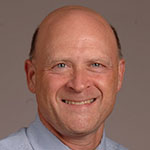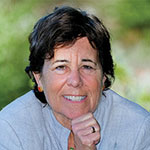The ATS Keynote Series highlights major advances, recent discoveries, significant accomplishments, transformative findings, and important best practices in pulmonary, critical care, and sleep medicine. These state-of-the-art lectures are presented in two sessions at 8:15-9 a.m. each morning during the conference, when no other programming is scheduled.
Today’s speakers will examine the progression of pulmonary research and improving post-ICU recovery.
NHLBI and the Evolution of Pulmonary Research (K1)
Room 6B (Upper Level), San Diego Convention Center
James P. Kiley, PhD, director of the Division of Lung Diseases, National Heart, Lung, and Blood Institute, National Institutes of Health, will discuss how heart, lung, and blood research can be expected to change dramatically over the next several decades in response to major drivers of research activity.
Dr. Kiley joined the NHLBI, in the NIH, as a health scientist administrator in the Institutes Division of Lung Diseases. He subsequently served as chief of the Division’s Airways Diseases Branch, director of the NIH National Center on Sleep Disorders Research, and currently serves as director of the Division of Lung Diseases. Dr. Kiley’s primary research interests include obstructive lung diseases and sleep.
Slow Medicine: The Key to Post-ICU Recovery? (K2)
Room 6 C/F (Upper Level), San Diego Convention Center
Victoria Sweet, MD, associate clinical professor of medicine at the University of California, San Francisco, and a prize-winning historian, with a PhD in history, will discuss a radical new understanding of how medicine is best practiced, based on her book, Slow Medicine.
Dr. Sweet practiced medicine for more than 20 years at Laguna Honda Hospital in San Francisco, where she began writing. Her second book focuses on what she calls Slow Medicine. The premise of Slow Medicine is that medicine works best—that is, arrives at the right diagnosis and the right treatment for the least amount of money—when it is personal and face-to-face; when the doctor has enough time to do a good job, and pays attention not only to the patient but to what’s around the patient.


